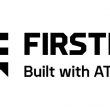Wireless links carry backhaul load
Increased network traffic coupled with high-bandwidth requirements for multimedia data services and better network reliability have pushed U.S. commercial mobile operators to replace their old T-1 copper lines with wireless links while dramatically reducing network operating costs.
The trend could be a boon for public safety as backhaul vendors flock to the commercial sector, allowing public safety to enjoy the benefits of innovation, lower network costs and, most important, reliability during emergency situations.
Backhaul has a major impact on carrier margins. According to N. Moore Capital, EBITDA (earnings before interest, taxes, depreciation and amortization) margins among the top North American carriers are declining quarter over quarter, primarily due to higher net customer additions across the industry. Carriers must continually pay more to lease T-1 and T-3 lines and fiber to support the growth.
“From a financial point of view, carriers are looking to reduce operating costs. The number one headache is subscriber churn. The number two is lease-line costs, and they can do something about that since they are hard costs,” said Michelle Pampin, director of global strategic planning with Harris Corp., a provider of microwave backhaul systems.
Although wireless backhaul links are prevalent throughout Europe, only 10% to 15% of traffic is transmitted via a microwave link, according to research firm the Yankee Group. Operators had focused heavily on quickly building out markets and adding customers during the telecom boom in the late 1990s, and the bandwidth used didn't justify a move to wireless backhaul. Today, however, advanced services such as CDMA 1xEV-DO and wideband CDMA are straining capacity, which in many cases requires the provisioning of as many as 12 T-1 lines, Pampin said.
“There's been a major shift within the last 18 months, and operators all over the place are looking to replace T-1 lines with microwave,” Pampin said. “T-1 lines to microwave line cost are not a wash anymore. Carriers can afford to do this.”
Harris struck a four-year frame agreement with Sprint, now Sprint Nextel, in February that calls for the carrier to use Harris's Truepoint platform for point-to-point digital communications as the backbone of the Sprint Nextel wireless network in key U.S. markets. The Truepoint product family can deliver service from 4 Mb/s to 180 Mb/s at frequencies ranging from 6 GHz to 38 GHz.
Microwave backhaul does require the carrier to buy licensed spectrum, but for the most part airwaves are available. In financial terms, microwave requires upfront expense in gear and licenses but costs less to operate over time.
Wireless local area network provider BelAir Networks, which launched in 2003, has adapted its Wi-Fi mesh technology into a point-to-point backhaul solution, allowing carriers to dramatically reduce backhaul costs in high-density markets, said Phil Belanger, vice president of marketing for BelAir. Operating in the unlicensed 5 GHz band, BelAir's mesh network solutions allow hundreds of cellular sites to be served wirelessly from a single wired point of presence, reducing both the time required to deploy a network and ongoing operating costs, Belanger said.
“We see ourselves as the dense urban underlay,” he said. “Our style of doing metro Wi-Fi is really advantageous in urban environments. The reason is we don't have to put something high on a tower and blast it. We have a distributed mesh mounted on street lights and buildings.”
BelAir's backhaul solutions offer operators multiple hops to address latency requirements and capacity, with built-in quality of service. That means traffic is automatically re-routed in case of network congestion or failure within the network. Belanger said the company is currently trialing the technology with cellular customers, but he concedes that operators are leery of the unlicensed nature of the technology.
Although BelAir has worked to make the solution more palatable with additional security layers and narrower beams to head off interference, the company is aiming to deploy mesh technology using the Fixed WiMAX standard, which can transmit up to 30 miles, in licensed spectrum such as the 2.3 GHz and 2.5 GHz bands.
In fact, the 802.16-2004 WiMAX standard long has been touted as an effective backhaul solution, but primarily for Wi-Fi hotspots, which have struggled to become profitable because of the high costs associated with T-1 backhaul. Today, a number of players tout WiMAX as an effective backhaul solution for mobile networks. Nortel Networks, for instance, recently announced plans to work with Airspan Networks to market and develop WiMAX solutions in the higher frequency bands for wireless backhaul.
San Francisco-based FiberTower is attacking the backhaul market differently by building and operating dedicated cellular backhaul networks in several markets, each of which is shared by different mobile operators. FiberTower — which has raised more than $220 million from a broad array of investors, including the country's three largest tower companies — has built a network that funnels traffic from multiple towers to central exchange points already in use by local telcos and located on rooftop facilities. From there, the traffic is forwarded via leased fiber-optic links to the local telephony switch. As a result, each exchange point takes in traffic from 15 to 20 towers, eliminating the need for multiple T-1 lines at each cell site.
FiberTower was born from a research project at Stanford, which was studying the economics of last-mile voice and data transport, said Harpinder Madan, co-founder and vice president of marketing and business development. “We found that just like in the PC space, the wireless carriers were giving away more product for the same revenue,” he said. “We've proven we can save cost and increase availability by more than 60%. … Backhaul failures are the single biggest source of cell-site downtime.”
Madan said FiberTower has agreements with several mobile operators, including Cingular Wireless, and operates microwave links primarily in the 18 GHz band.
The beauty of wireless links such as microwave is their ability to withstand natural disasters, a trait that public-safety entities value highly, said Harris's Pampin. By building wireless rings, traffic is simply re-routed across the network rather than being lost when there is a single point of network failure. Consequently, Harris is able to build microwave links with the coveted “five-nines” reliability.
Many Gulf Coast wireless operators have turned to Harris's microwave division to deliver backhaul solutions in the wake of Hurricane Katrina. The company has shipped more than 100 microwave links to a variety of users — including commercial operators, utility companies and government entities — that plan to put microwave antennas for backhaul and access where there are no T-1 lines available, Pampin said.
The wind damage that Hurricane Katrina caused to some wireless systems' towers, the fact that key network equipment is underwater in many places and the lack of commercial power across the affected area together have made it very difficult for operators working to restore their communications systems. In contrast, microwave links give operators long-range backhaul that is not affected by water damage to lines.
Consequently, such systems are ideal for public-safety communications, Pampin said. “Microwave doesn't go down easily.”

















